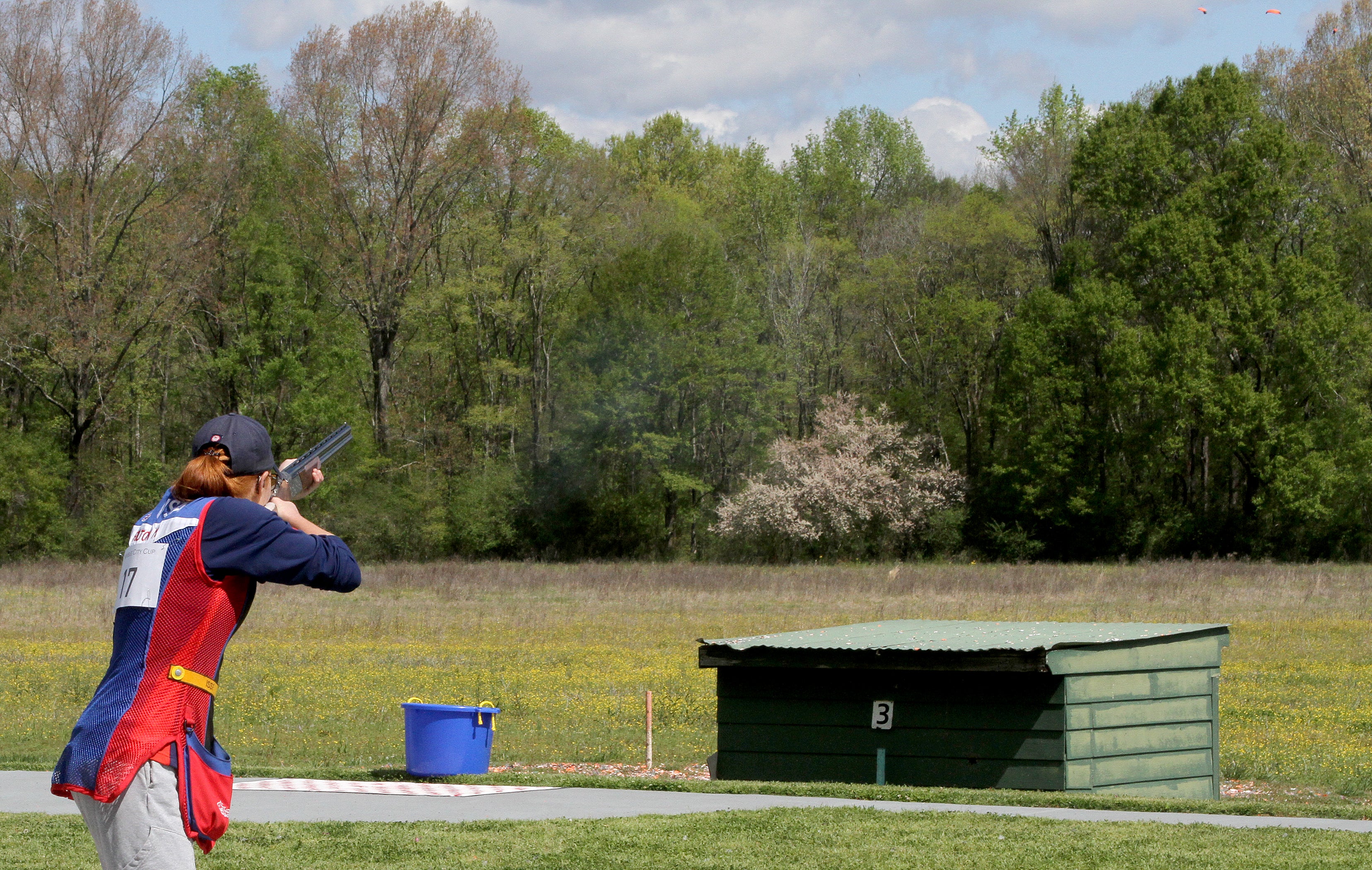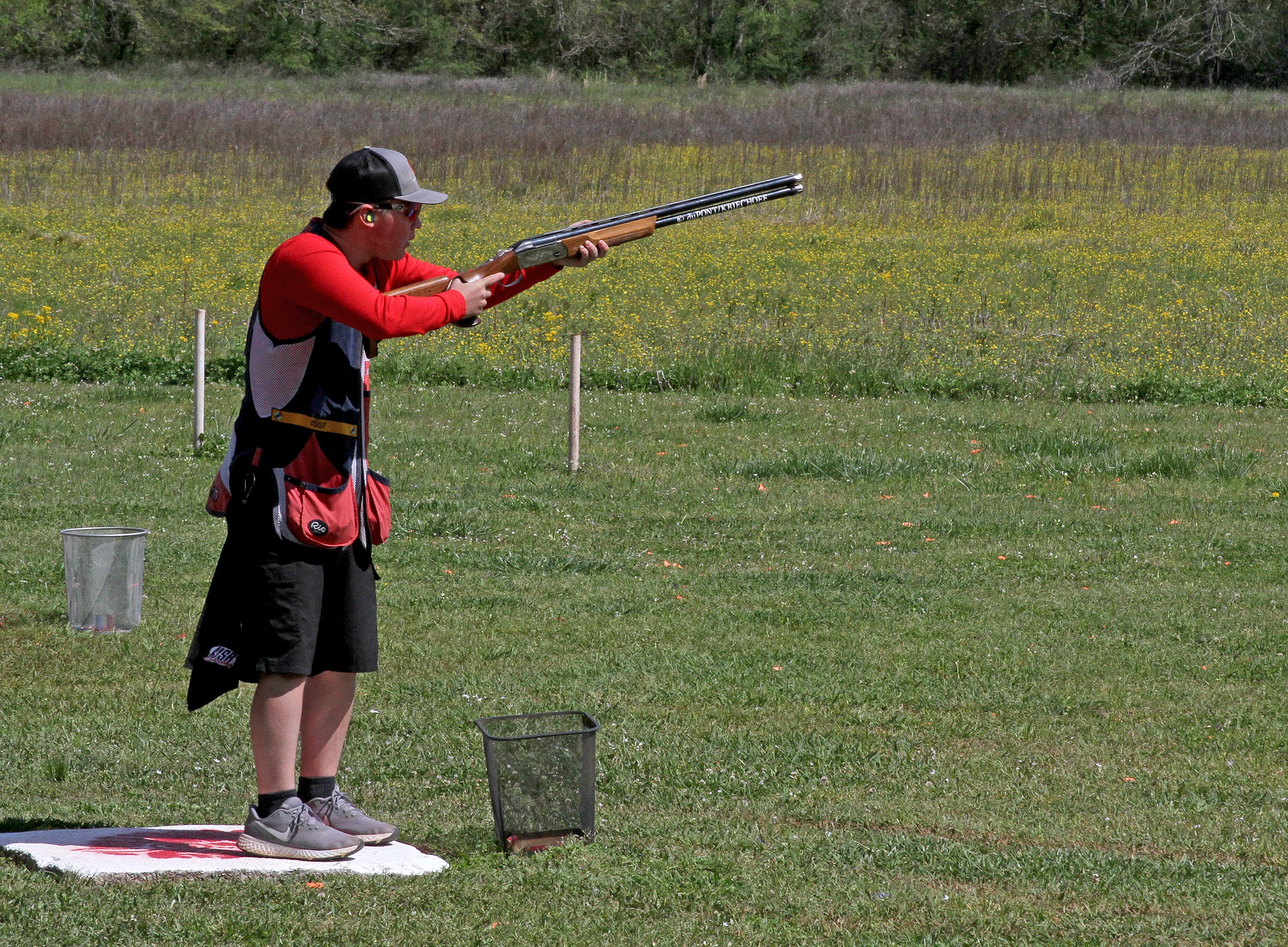By DAVID RAINER, Alabama Department of Conservation and Natural Resources
Imagine trying to hit a clay target flying almost twice the speed you’re accustomed to at the skeet range. And you must start with your shotgun at a lowered position. That is what competitors at the Marble City Cup at Red Eagle Skeet and Trap Club in Childersburg faced at the first U.S. International Skeet event held in Alabama in decades.
Thanks to a Pittman-Robertson grant through the Alabama Department of Conservation and Natural Resources’ (ADCNR) Wildlife and Freshwater Fisheries (WFF) Division, Red Eagle was able to upgrade its trap machines to be able to hold international skeet competitions at the range.
Marisa Futral, WFF’s Hunter Education Coordinator, said these trap machines make Red Eagle the only range in Alabama where you can shoot Olympic-style targets.
“This gives Olympic hopefuls in Alabama and surrounding states a place to practice without having to fly across the country,” Futral said. “WFF is excited to be able to offer this opportunity to its citizens by partnering with Red Eagle in this endeavor.”
Angus MacGreigor, an international shooter and coach who is a fixture at Red Eagle, said WFF was asked four years ago to make an investment in the skeet and trap facility for the youth of Alabama.
“They did that,” MacGreigor said. “They purchased the machines for us that have the ability to throw international and Olympic targets. They made that investment. The members of this club have worked their tails off to get the facilities up and running. From the stars and stripes in the paint, they’ve taken care of every detail to prepare for this competition. I think we have met the expectations of the state of Alabama. We hope to work even more with the state of Alabama to grow this into a world-class shooting facility.”
MacGreigor said Red Eagle once had the capacity for international shoots several decades ago when the U.S. Army Marksmanship Team, based in Fort Benning, Ga., trained at the Childersburg facility.
“To have the competition here with a shooter who has just gotten off a plane from Peru for a World Cup competition, and the Army Marksmanship Unit is here, it’s just phenomenal for Alabama,” he said. “It is also phenomenal because of the junior shooters here. These are our junior development kids, which this is all about. Now they have the opportunity to drive somewhere to see the best in the world competing. It’s hard to run a marathon when you don’t know where the finish line is. Now, they get to see the finish line and what’s possible. To see the shooters we have here, some of whom will shoot in the Olympics, it’s phenomenal for Red Eagle and for the junior development.
“Like I said three years ago at the 4-H State Championships, competitive shooting is a metaphor for life skills – the process required for desired outcomes. Seeing these top shooters with notebooks and working the process with their coaches, you do what you see, what you surround yourself with. I can’t be more excited.”
MacGreigor said he had conversations with Craig Hancock of Hancock Shooting Academy in Eatonton, Georgia, and other Olympic shooting coaches at the event to develop Red Eagle as a training site for young shooters.
“There’s nobody here, other than myself, to teach these young shooters Olympic and international skeet,” he said. “There are actually three shooters here, two from the state of Alaska that I developed, that are now on USA teams. To be able to have the coaching and clinics here in the future, they too can reach out and aspire to become an Olympian.”








